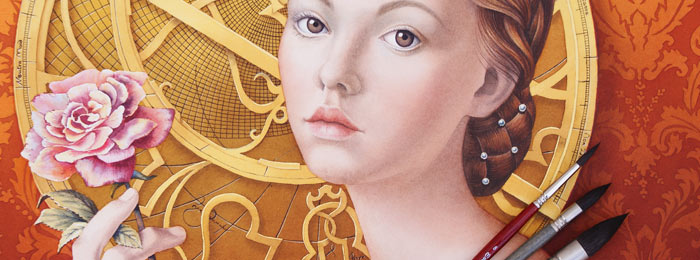Question from Silvano
“What is the most difficult part of drawing that newcomers often get wrong – i.e. the most common mistake made?”
Illustrations by Vladimir London
Dear Silvano,
Many thanks for your question.
A novice artist without proficient art education would struggle with the concept of “constructive drawing” and, as the result, will have difficulties with drawing in perspective, foreshortening, depicting objects so they appear three-dimensional, make mistakes with proportions and, of course, human anatomy.
Instead of “constructively building” objects and figures in drawing, an amateur artist would rely on intuitive copying what one sees. This is the way drawing is taught in many art colleges, by the way. No wonder why so many artists graduate with no proper drawing skills.
The main reason why those mistakes would be inevitable is because we don’t see what we don’t know. To illustrate it, I will give you the following example.
Let’s say an artist is drawing a model from life. There are no photos to trace, no grid or projector to use – just a model, drawing board and a pencil in hand.
There are many things an artist must know to depict a model in a realistic manner. This includes human body proportions, skeletal and muscular anatomy, the knowledge of how to measure with a pencil, how to draw foreshortened objects in perspective, and so on.
Drawing is a cognitive process that happens in artist’s head, not on paper.

Painting by Vladimir London. Watercolor on 100% cotton paper, Escoda brushes.

Fragment of painting by Vladimir London
Unless an artist knows what proportions of a human figure to check, he or she would not see those proportions in life. Just to expand on this premise – did you know that in standing figure the distance from the pit of the neck to the pubic bone is equal to the distance from the top of the knee-cap to the top of the pelvis, and also equals to the distance from the toes to the top of the knee-cap? If not, how would you guess what measurements to check in your drawing?
This also applies to the way an artist draws lines. For example, did you know that drawing one long line from the shoulder to the hip or from the chest to the knee is an amateur mistake in figurative drawing? That’s what some teachers actually teach in art colleges, and some art books advocate the idea as well. Instead, a proficient artist would draw outlines of both shoulders in sequence, then might draw both left and right outlines of the chest, and so on, drawing body parts in pairs rather that continuing line from one part to another at one side of the figure.
The list of such examples is endless. All I want to say that you have to have the necessary knowledge and know-how of constructive drawing principles.
This is what we teach in the Drawing Academy course and Anatomy Master Class.
Best regards,
Vladimir






I significantly agree with the assessment of what beginners get wrong. My four years at an accredited University with a Major in art none of what is mentioned in this article was even remotely addressed. In the drawing classes we were left with a modle who changed positions according to the instructors directions while he or she went into their office, drank coffee and read the news paper or piddled away the time in other manners.
I have been out of the field for a long, long time and only recently re-introduced myself to art (focusing on pencil work and pen and ink). I have engaged in the study of anatomy by noted men as Gottfried Bammes and comparable instructors. With months of work and months more to come I have come to realize how vitally important it is to know proportion, skeletal structure, muscel groups and their attachments, landmarks and more. The itty bitty amount I am absorbing has been paying off and I would strongly suggest anyone reading this article would listen to it closely and impliment.
A very interesting discussion, but why is it that the paintings of artists such as Salvador Daly, Jackson Pollock, Picasso, Edward Munch etc. considered amongst the best art, reaching some of the highest prices on the globe?
REgards, and thanks for your regular emails – much appreciated.
Gert Venter.
Hi Gert,
Thank you for your comment, but it is irrelevant to this article.
This article is about constructive principles of realistic drawing, not about marketing and the contemporary art market bubble.
If you are interested why any rubbish that someone would like to call “art” can be sold for high prices, check this video:
http://drawingacademy.com/contemporary-art-bubble
By the way, the most expensive painting ever sold is the “Salvator Mundi” by Leonardo da Vinci (as of 2017).
Leonardo was one of the best craftsmen who knew how to draw proficiently and put standards of fine art unreachable high.
can these courses be done at ones own pace
Yes, of course! As a Drawing Academy member, you will have a lifetime membership and can study at your won pace. There are no deadlines, no time pressure.